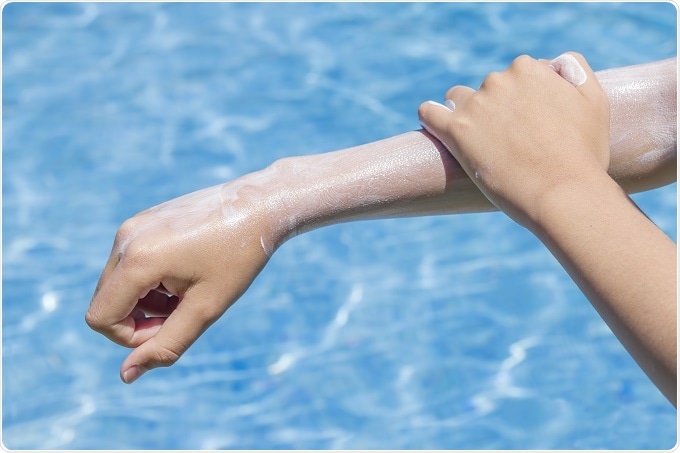The harmful effects of the sun's ultraviolet (UV) rays are well publicised and the risk of developing skin cancer has scared many people into using a sunscreen product to protect their skin when exposed to the sun. However, a recent test of the performance of a range of marketed sun protection products revealed that many of them fail to provide adequate protection against UV rays.
 Credit: Armari36/Shutterstock.com
Credit: Armari36/Shutterstock.com
UV radiation is emitted by the sun and, having wavelengths shorter than visible light, is invisible to the naked eye. Although there are three classes of UV light, UVA, UVB and UVC, only UVA and UVB reach earth. Both UVA and UVB cause damage to the skin; UVA penetrates deep into the skin causing wrinkling and other signs of aging whereas UVB only reaches superficial layers of the skin resulting in sunburn. UV radiation also suppresses the immune system, reducing the body's ability to fight against the development of cancerous cells and other diseases.
The American Academy of Dermatology recommends everyone use sunscreen daily as we are exposed to damaging UV rays even on cloudy days. They advise using a product with a Sun Protection Factor (SPF) of 30 or higher that protects against UVA and UVB rays, and reapplying it regularly. The SPF is a measure of the product's ability to screen or block out UV rays. An SPF rating of 30 indicates that a thirtieth of the UV rays reach the skin through the sunscreen.
Every year Consumer Reports, the world’s largest independent, non-profit consumer organization, tests 58 sunscreen products for the levels of UVA and UVB protection they offer. This year, they reported that 20 of the sunscreens tested provided less than half the sun protection claimed on their label. Some products provided good protection despite it not being as high as the manufacturer's claim. Importantly, none of the ‘natural’ or mineral active ingredients, such as zinc oxide, provided adequate UVA and UVB protection.
Trisha Calvo, Deputy Content Editor, Health and Nutrition at Consumer Reports, commented “For the fifth year in a row, many sunscreens failed to provide an adequate level of protection in our tests. When consumers wear sunscreen, they should feel confident that they’re well-defended against sunburn, skin cancer, and skin aging, and that they’re actually getting the level of protection promised on the label.”
The researchers recommended that, to ensure their safety, consumers only buy sunscreen products containing chemical active ingredients, such as avobenzone, that have an SPF of at least 40.